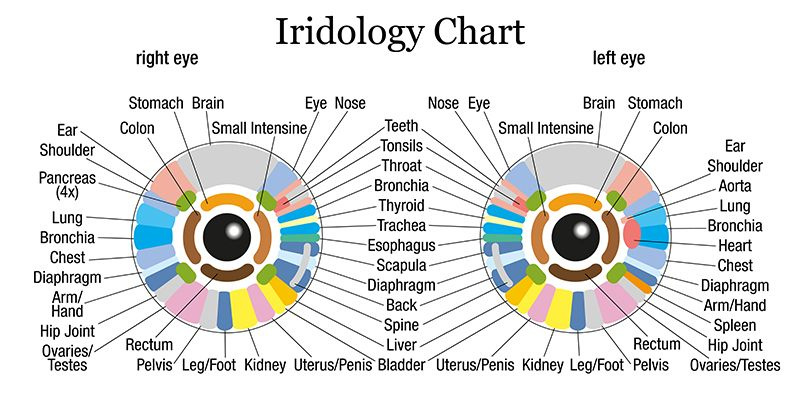Introduction to Iridology
Iridology is a fascinating alternative medicine therapy that involves studying the iris of the eye to gain insights into a person’s overall health and well-being. The iris is the colored part of the eye, and according to iridology, it is a map that reflects the condition of various organs and systems within the body. By closely examining the patterns, colors, and markings in the iris, iridologists can identify potential health issues and provide personalized recommendations for improving one’s health.
What is Iridology?
Iridology is the practice of analyzing the iris of the eye to determine a person’s health status. It is based on the belief that the iris is connected to every organ and tissue in the body through the nervous system. By examining the iris, iridologists claim to be able to identify imbalances, weaknesses, and potential health problems in specific areas of the body.
The history of Iridology
The origins of iridology can be traced back to ancient civilizations such as the Egyptians, Greeks, and Chinese. However, it was Dr. Ignatz von Peczely, a Hungarian physician, who is credited with developing iridology into a modern-day practice in the late 19th century. Dr. von Peczely noticed that an owl he had accidentally injured had a black line in its eye, which disappeared as the bird healed. This observation led him to believe that changes in the iris could reflect changes in the body’s health.
How does iridology work?
Iridologists examine the iris using a specialized tool called an iridoscope, which magnifies the iris and allows for a detailed analysis. They look for various indicators such as color variations, patterns, and markings, which are believed to correspond to specific organs and systems in the body. For example, dark spots in certain areas of the iris may indicate issues with the kidneys, while white spots may suggest problems with the liver. By interpreting these signs, iridologists can provide insights into a person’s health and recommend appropriate lifestyle changes or treatments.
Understanding the basics of iridology eye chart

The iridology eye chart is a key tool used by iridologists to help them analyze the iris. It is a detailed map of the iris, divided into different zones that correspond to specific organs and systems in the body. Each zone is further divided into subzones, which allow for a more precise analysis. By examining the patterns and markings within these zones, iridologists can identify potential imbalances or weaknesses in the corresponding organs or systems.
What can iridology detect?
Iridology is believed to be able to detect a wide range of health conditions, both acute and chronic. Some of the conditions that iridologists claim to be able to identify include digestive issues, hormonal imbalances, respiratory problems, and even emotional or psychological issues. While iridology cannot diagnose specific diseases, it can provide valuable insights into a person’s overall health and help identify potential areas of concern.
The benefits of iridology
One of the main benefits of iridology is its non-invasive nature. Unlike other diagnostic methods, such as blood tests or imaging scans, iridology does not require any physical intervention or exposure to radiation. It is a painless and safe procedure that can be performed on individuals of all ages. Additionally, iridology provides a holistic view of a person’s health by considering the interconnectedness of various organs and systems within the body. This allows for a comprehensive assessment and personalized recommendations for improving overall well-being.
Holistic iridology and its approach
Holistic iridology takes the principles of traditional iridology a step further by considering not only the physical aspects of health but also the emotional, mental, and spiritual aspects. It recognizes that true well-being is not just the absence of disease but a state of balance and harmony in all areas of life. Holistic iridologists take into account a person’s lifestyle, diet, stress levels, and emotional state when analyzing the iris. This comprehensive approach allows for a more in-depth understanding of a person’s health and provides a foundation for promoting holistic healing.
Integrating iridology into holistic health practices
Iridology can be a valuable tool for practitioners of holistic health practices. By incorporating iridology into their assessments, practitioners can gain additional insights into a person’s health and tailor their recommendations accordingly. For example, a nutritionist may use iridology to identify specific nutritional deficiencies or sensitivities, while an herbalist may use it to determine which herbs would be most beneficial for a particular individual. The integration of iridology into holistic health practices enhances the effectiveness of these therapies and promotes a more individualized approach to healing.
Conclusion
Decoding the language of the eyes through iridology offers a unique and holistic perspective on health and well-being. By examining the iris, iridologists can identify potential imbalances and weaknesses in the body, allowing for personalized recommendations that promote overall wellness. Whether used as a standalone therapy or integrated into holistic health practices, iridology provides valuable insights into a person’s health and serves as a powerful tool for achieving optimal well-being.
Tune in to Wellness, Wholeness & Wisdom to learn more about Alternative Medicine Therapies and how they can enhance your well-being.